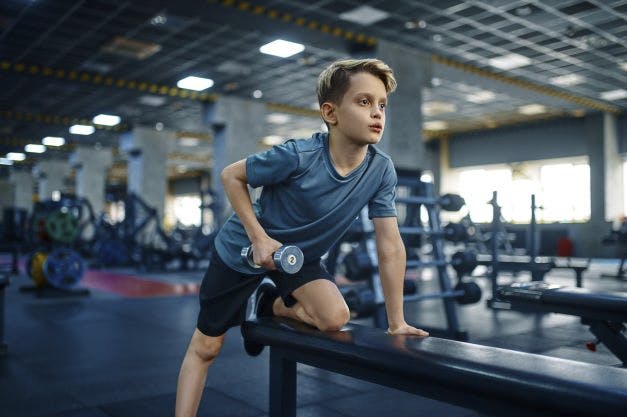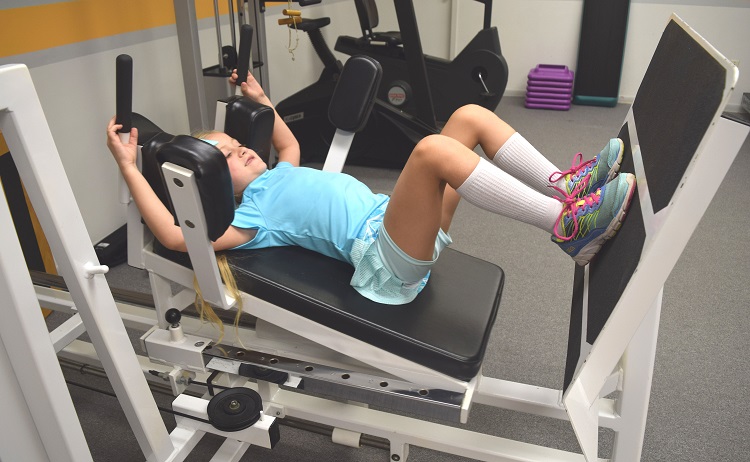Many parents, coaches, and those within the medical community have concerns about the safety of strength training for children. Are these concerns based on solid research? Or, is it time to put these misconceptions to rest? This article answers these questions and more about whether or not your child should lift weights.
What Is Resistance Training?
Before discussing the evidence, clear definitions of the terms children and resistance (or strength) training are helpful. Resistance training is a specialized form of conditioning. Children work against a wide range of resistive loads to enhance health, fitness, and performance. It even helps prevent injury in children
Resistance training includes the use of body weight, weight machines, free weights (barbells and dumbbells), elastic bands, and medicine balls. Resistance training is not the same as weightlifting and bodybuilding.
The term children refer to girls and boys, generally up to the age of 11 and 13 years, respectively. These children have not yet hit puberty and have not developed secondary sex characteristics.
Injury Rates in Children
With qualified supervision, the risk of injury from resistance training in children is very low. A 2010 review paper in the British Journal of Sports Medicine summarized over 30 studies conducted on youth resistance training. These researchers found reports of only three injuries when properly supervised. The 3 injuries reported were short-term non-serious injuries such as muscle strains and low back pain.
In fact, the estimated risk for injury from youth resistance training has been estimated to be 0.05 to 0.17 for every 100 hours of training. These injury rates are far lower than those for children engaging in sports such as soccer, football, baseball, gymnastics, lacrosse, and running. Youth injury rates from resistance training are also believed to be no different than those of adults.
Growth Plate Injuries from Strength Training
The most often cited concern associated with youth strength training is the potential for injury to the growth plate and “stunted growth”. There have been a few retrospective case reports describing injuries to the growth plates in children.
However, most of these injuries were caused by improper lifting techniques, poorly chosen loads, or a lack of qualified adult supervision. For example, in one case report a 13-year-old boy sustained elbow growth plate fractures when he lost control of a 65-pound barbell he attempted to press overhead while exercising alone at home.
Injury to growth plates has not been reported in any prospective youth resistance training study that provided professional supervision and instruction. There is also no evidence that resistance training can negatively impact growth in height during childhood. The risk of growth plate injury is likely greater when children perform jumping and landing activities during free play.
When Can My Child Begin Strength Training?

Many of the forces that youth are exposed to in sports and recreation (e.g., soccer, basketball, football, and running) are greater both in duration and magnitude than properly performed resistance training. However, problems can, and often do arise, when children are introduced to resistance training with inappropriate instruction or supervision.
With the increasing volume and intensity of youth sports, it is more important than ever that children are properly instructed, supervised, and progressed by qualified personnel. Therefore, parents and coaches should seek out qualified professionals who are knowledgeable and up-to-date with the evidence about youth resistance training.
Children can, and should, begin strength training as soon as they are psychologically and emotionally ready to follow instructions from a qualified coach or trainer. For some children, this could be as early as 6 years old. Others may have to wait until they are 12 or 13 years old.
[ebooksignup]

